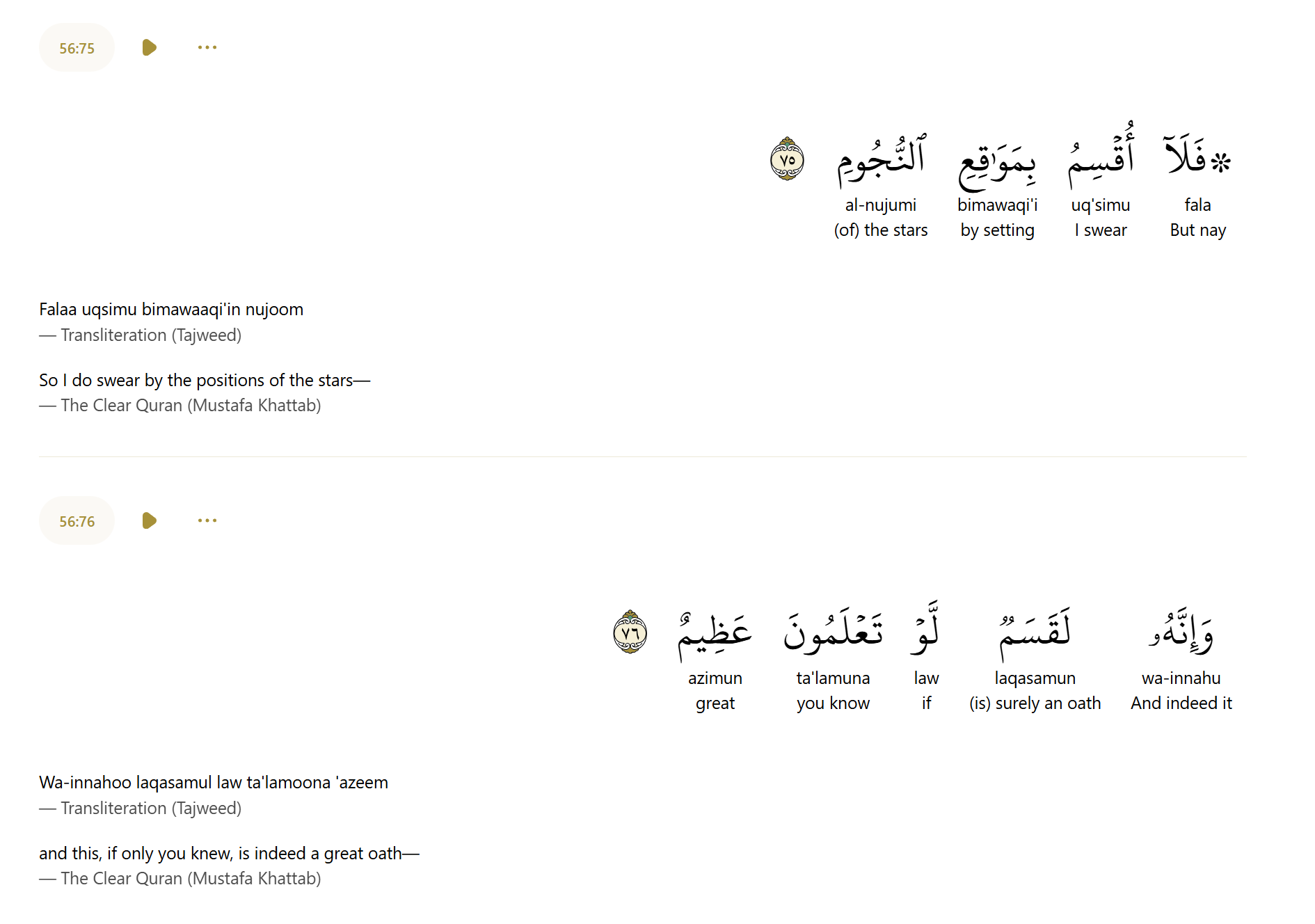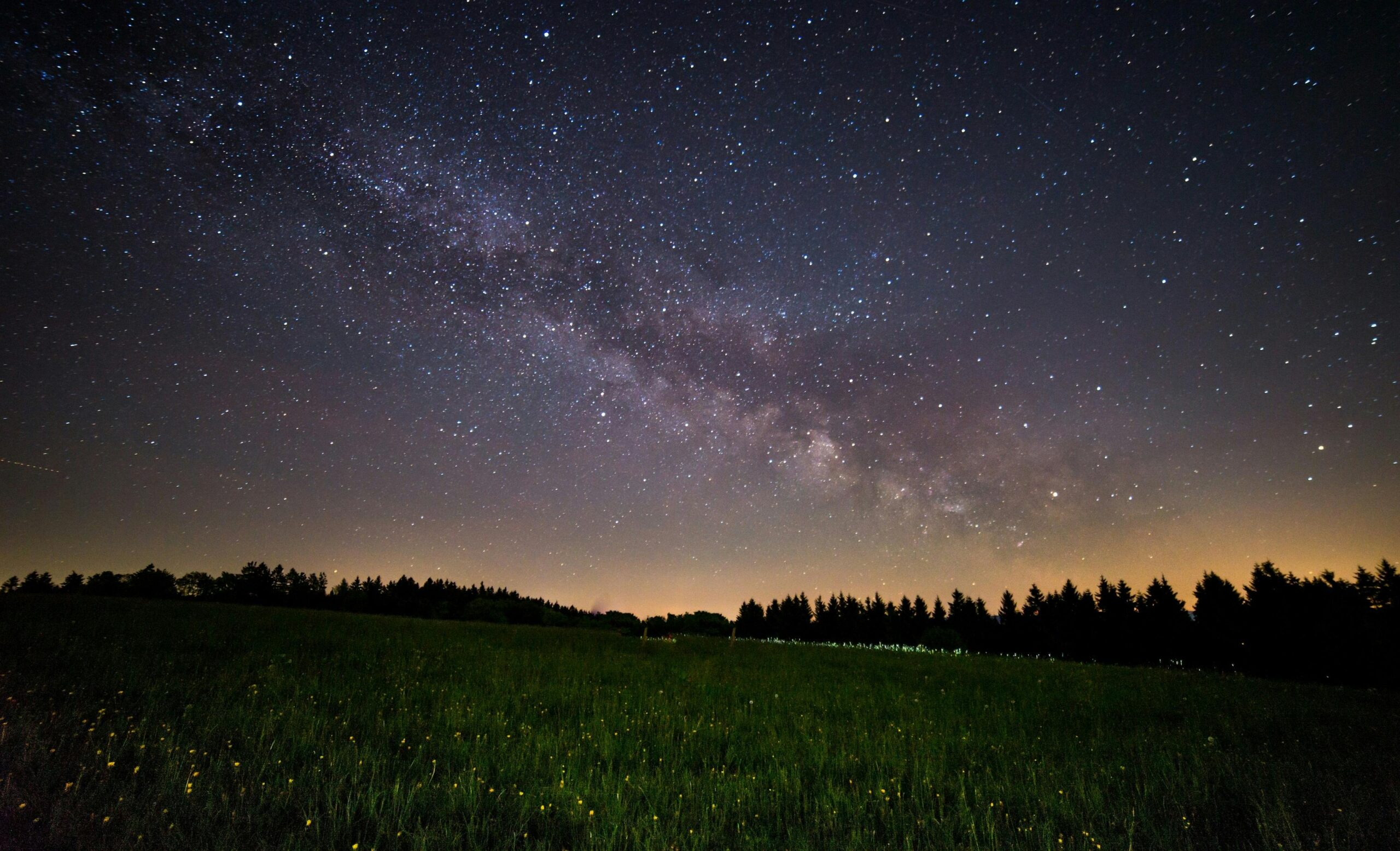SURAH AL WAAQIA (THE INEVITABLE): AYAT 75-76 (QURAN 56:75-76)
To gaze upon the stars is to peer into a cosmic time machine. Each shimmering point of light in the night sky is not merely a distant sun—it is a messenger from the past, carrying with it the story of its origin across the vast expanse of space and time. The light we see tonight may have begun its journey thousands, millions, or even billions of years ago, long before the rise of human civilization, before Earth bore witness to life as we know it.
This phenomenon arises from the finite speed of light—approximately 299,792 kilometers per second. While swift by terrestrial standards, light takes time to traverse the immense distances between stars and Earth. For instance, the light from Sirius, the brightest star in our night sky, takes about 8.6 years to reach us. Thus, when we look at Sirius, we see it not as it is now, but as it was nearly a decade ago. More distant stars and galaxies offer even deeper glimpses into the past, revealing ancient epochs of cosmic evolution.
In this way, stargazing becomes an act of temporal reverence. We are not merely observing celestial bodies—we are witnessing history written in photons. The night sky becomes a tapestry of time, stitched together by the silent brilliance of stars long gone or still burning in the distant reaches of the universe. The Hubble Space Telescope, for example, has captured images of galaxies so far away that their light began its journey when Earth was still in its infancy. You can explore some of these breathtaking views in Hubble’s image gallery.
To stare into the heavens, then, is to commune with the past. It is to recognize that the universe is not static, but a dynamic archive of light, memory, and motion. And in that quiet moment of reflection, beneath the canopy of stars, we become part of a grand cosmic dialogue—one that transcends time, space, and the boundaries of our fleeting existence.
The Qur’an invites its readers to contemplate the heavens not merely as a spectacle of beauty, but as a profound source of guidance, symbolism, and spiritual insight. The stars, in particular, are portrayed as signs (āyāt)—tokens of divine order and wisdom scattered across the canvas of the cosmos.
One of the most evocative verses comes from Surah Al-An’am:
“And it is He who made the stars for you to guide you through the darknesses of the land and sea. We have certainly explained the signs for a people who know.”
— Qur’an 6:97
This verse highlights both the practical and metaphysical roles of stars: they are navigational tools and symbolic beacons. But when paired with our scientific understanding—that starlight is ancient, a record of the past—it deepens the spiritual resonance. The stars become not only guides through space, but through time, reminding us of the vastness of creation and the enduring presence of divine will.
Another striking verse appears in Surah Al-Najm, named after “The Star”:
“By the star when it descends…”
— Qur’an 53:1
This oath by a descending star is rich with interpretive layers. Classical scholars often viewed it as a metaphor for revelation, while modern readers might see in it a poetic nod to the physical reality of starlight arriving after a long journey. The descent of light from a star—perhaps long extinguished—echoes the descent of divine knowledge: both are delayed transmissions, arriving in their appointed time to illuminate the seeker.
Moreover, Surah Al-Waqi‘ah offers a tantalizing hint at the mystery of cosmic knowledge:
“So I swear by the positions of the stars—and indeed, it is a mighty oath if you only knew.”
— Qur’an 56:75–76
The Arabic word mawāqiʿ (positions) can imply not just spatial placement but temporal alignment. Modern astronomy confirms that the positions we observe are historical, not immediate. This verse, then, may subtly allude to the layered nature of cosmic perception—a truth only recently grasped through astrophysics.
From a scientific lens, the stars are archives of ancient light. From a Quranic lens, they are signs of divine artistry and cosmic order. Together, these perspectives converge into a unified vision: the heavens as a sacred manuscript, written in photons and verses, inviting reflection, humility, and awe.

